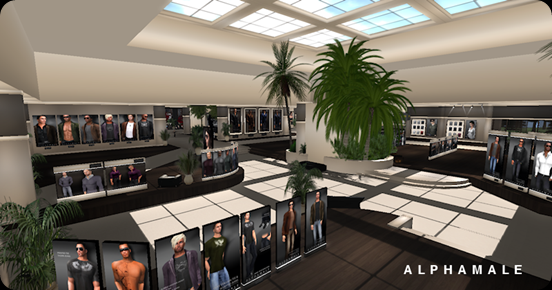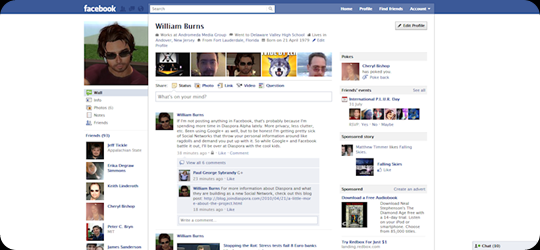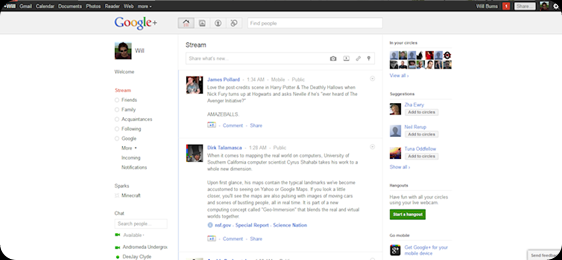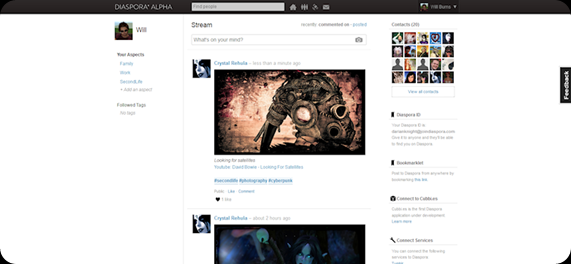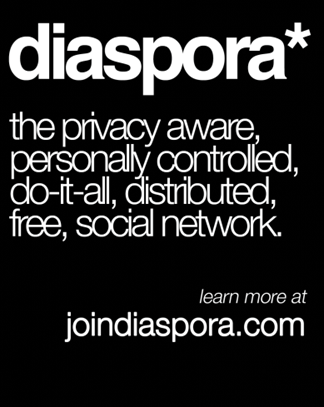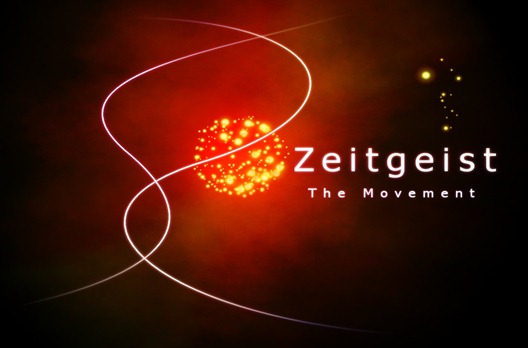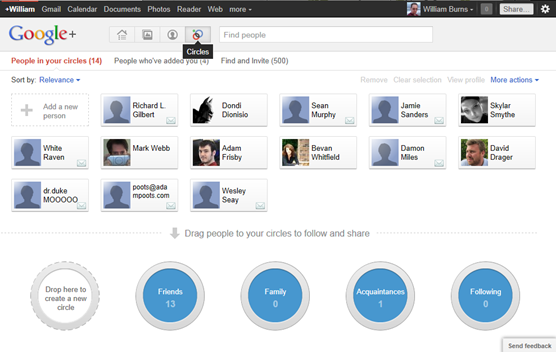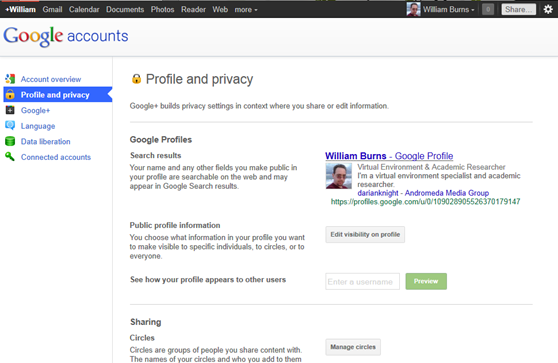Amending #Google’s motto into something more realistic.
I believe Google should be amending their slogan from "Don't be evil" to "Don't be stupid". They've essentially thumbed their noses up at the very nature of the Internet and the roots of what makes it great. Pseudonyms are a part of the very fabric of what make the Internet what it is, and the culture that has given rise to what we know as Cyberspace. While this has brought both good and bad as a result, I believe the very existence of the Internet as we have today is ongoing proof that the good far outweighs the bad.
In a digital culture such as we have today, everybody is famous in their own way, and pseudonyms comprise an irrevocable part of that culture. To make any attempt to deny that history and legacy is to do so at their own risk.
We live in an era of multiplicity of identity, each having proper context and just as much weight as any other name we may use. In that Google wants only a wallet name shows only willful ignorance on their part in failing to understand that they are dealing with people who are represented by multiple identities, interests, and behaviors, all which are a part of a greater whole of the individual.
In a court of law, individuals are innocent until proven guilty. So too should pseudonyms be addressed - they are acceptable until proven otherwise. It is the individual's right to choose what name they use, not a corporation. This is why there are laws in nearly every country on Earth defining the very legality of using a pseudonym at will for a myriad of purposes farther reaching than a simple social network.
While the Electronic Frontier Foundation states in a recent write-up “A Case For Pseudonyms” that companies like Google and Facebook are entirely within their right to forbid pseudonym usage, they also point out that it is horribly short-sighted and often times damaging and even life-threatening to do so. I'd like to believe that Google is not so blinded by short-sighted goals and profits that they are willing to jeopardize the well-being and even lives of others in the process.
If the purpose of Google is stated as being the intention of bringing all the world's knowledge and information together, as well as the people, then they must understand that they simply cannot exclude a majority of the people or outright deny the culture that gave them this opportunity. If it wasn't for a world full of pseudonyms, Google would have no Internet to dominate. For every person, there are multiple identities, each with distinct metrics and differentiation of personality in context of the virtual space in which they inhabit as their domain. In the eyes of Google, this should account for much more opportunity than they currently seem to grasp.
Yet, while Google and Facebook are entirely within their right to deny the use of pseudonyms and demand a wallet name, the price they pay for doing so may, in turn, be far too high for even them to accept. This fiasco is reaching mainstream media, and even celebrities such as William Shatner are lamenting over their profiles being suspended, while others such as @Skud are continuing with interviews in mainstream media railing against these policies, all for the world to read. Twitter is alight with similar discontent from users who have had their profiles suspended for pseudonymous usage, and as these personal accounts continue to mount in public view, the future of Google+ does not look as bright as it once did. While Google+ may, indeed, enjoy a fair amount of success, it will have willingly sabotaged its own growth and success from what could have been a true game changer.
While Google and Facebook are within their rights to deny pseudonyms and even anonymous usages, surely they are not so ignorant as to fail to understand the maelstrom of bad PR and ill-will they create worldwide in doing so.
While it has been claimed that I somehow believe that avatars are real people, I must contest the oversimplification and misstatement of such. Avatars to me are merely digital representations of a person which bare the context of a virtual environment space pseudonym. As I believe that pseudonyms are just as legitimate as a wallet name in all but the most well defined cases, and are protected and sanctioned by nearly every country on Earth through law, I make my claim that I believe that the context of the pseudonym matters little while the actual usage of the pseudonym matters most. In a digital world, we carry many pseudonyms or possibly just one that is well known or chosen, and each usage of such is entirely dependent on the use context – that being the scenario by which the individual decides what personality best suits the digital arena by which they will participate, while retaining the right to manage their multiple personality order as they see fit.
In the context of social media, such as Facebook or Google+, the right of the individual to freely choose their forward facing personality and context of immersion is a cherished right and not a privilege. As such, an avatar to me constitutes as much of a real person as I would attribute to that of Mark Twain and the works and actions thereof. Simply using a pseudonym in context does not invalidate any part of the person using it, nor does it make the person behind the pseudonym any less real. By association, therefore, an avatar is the representation of a real person and fueled by the actions of the very real person behind it (excluding the actions of an artificial intelligence bot at this time). However, just like anything having to do with digital representations, an avatar on it’s own does not constitute a real person, but instead constitutes the forward facing chosen identity of a real person in proper context to the digital environment space they are currently participating in. Whether that space is a virtual reality or a social media hub is inconsequential as our multiplicity of identity will eventually become cross-domain and interchangeable, and indeed already has despite efforts by companies to the contrary.
This, in and of itself, offers a very profound glimpse into the future of our digital multiplicity, or multiple personality order, in that the concept of “True Names” takes on an entirely different meaning in today’s society than it did prior to the digital age. As a result of this profound paradigm shift, we see today that even large corporate entities such as Google and Facebook somehow are unable to understand the importance of multiplicity of identity, and continue with their attempts to reshape the entire fabric and legacy of what made the Internet and digital culture what it is today.
The final question remains - At what point does the price of their policies become too much to continue? From a perspective of simple common sense, I'd say they've already reached that point, causing more harm to their reputation and social media product than may be reversed before they've managed to make it to an actual launch.
In the end, the point remains: What people are angry about is that their common names are not recognized by Google, and simply offering those people the chance to comply with practices that they already are against is not an answer, in the same light as this "solution" is really further proof that Google is willfully ignoring the very premise of the debate and in doing so, are blatantly insulting the world. If a common name happens to be a Pseudonym, then so be it. There should be no obligation to fill in a field with a wallet name, and a pseudonym should be just as acceptable - if not more acceptable since in many cases, the world is more likely to know the pseudonym than the wallet name.
While I’ve heard the opposite take on this subject, being that we are not “forced” to use Google+ or any of Google’s services, that is much like asserting that a near monopoly of services aren’t forcing you to use them. Simply because a company offers great things, and arguably better than competition, does not constitute a right to demand things from your users that can be dangerous. Yes, as users, we are the commodity not the customer, however I challenge that notion since we are willingly trading mountains of information about ourselves on a daily basis for access to a service, which in turn make these companies a lot of money. We are, indeed, customers in that we are paying for these services with something vastly more valuable than money – our own privacy and identity. The very least we can do is draw a line in the sand for one crucial piece of information that we alone should have control over – and that is our own identity and how it is presented.
Because of this, I have chosen to refer to Google as a company whose motto should be changed to "Don't be stupid." It is far more fitting given the current situation, and bares repeating when a company such as Google seems to have entirely missed the obvious.
Signed,
Will Burns
Object Interoperability Lead | IEEE Virtual World Standards
Aeonix Aeon in SecondLife







